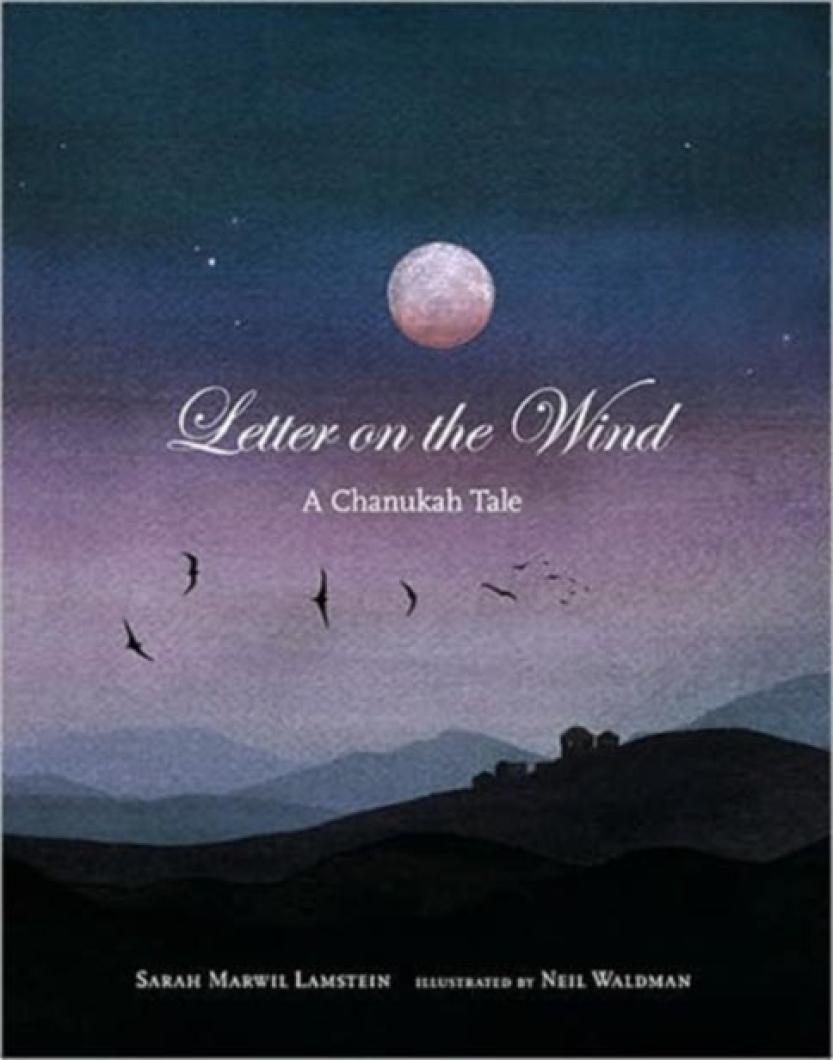LETTER ON THE WIND: A Chanukah Tale. By Sarah Marwil Lamstein. Illustrated by Neil Waldman. Boyds Mills Press, Honesdale, Pa. 2007. 32 pages. $16.95 hardcover.
Sarah Marwil Lamstein has done an excellent job recreating the miracle of Hanukkah in her book, Letter on the Wind. She has written a story that takes the usual Hanukkah tale and alters it in a way both those who believe and those who don’t can enjoy. Despite a few dabbles of the supernatural intervening, this story can be interpreted as a religious tale of Hanukkah or simply a nice folk tale in which a poor man saves his village from a year without Hanukkah.
Hanukkah, which Jews celebrate by lighting candles for eight nights, commemorates Mattathias Maccabee, who stood up against the Roman conqueror King Antiochus and refused to worship the Roman gods. The king destroyed the Jewish temple and drove the followers of Mattathias into the countryside. Mattathias’ son, Judah Maccabee, led the remaining rebels back into the town to retake the temple. When they had beaten the Romans, the Jews found that there was only enough oil to burn the eternal light of the temple for a single night, yet that small amount of oil lasted eight days, giving the Jews enough time to make new oil and replenish the supplies. Thus the tradition of Hanukkah was born.
Instead of simply rewriting the story of Hanukkah, Mrs. Lamestein has created her own. The problem is the same as it was when Judah Maccabee retook the temple: there was not enough oil. A poor man named Hayim, who is also the most faithful, declares that he will not let there be a year without Hanukkah. He has the village scribe write a letter addressed to the Almighty a few nights before Hanukkah begins. Most of the village members think he is a fool, others decide he is senile. While the last few days dwindle away, the letter is blown across to faraway nations and lands on the balcony of a rich merchant, who decides that the Almighty has chosen him to carry out the Almighty’s will. He sends a group of servants bearing oil and a beautiful menorah, telling them to go where the camels lead them and to leave the goods wherever the camels stop and to return immediately.
The first day of Hanukkah arrives and Hayim leaves his hut to find his wish granted. That morning he rushes to the village and announces any who have want of oil should simply come to his house that night. Although the villagers have their doubts, all of them are there to collect enough oil to light their menorahs. Last to depart is the scribe, but before leaving he sees the name of a rich merchant carved into the silver at the menorah’s base. He accuses Hayim of being a thief before returning to the village, where he begins writing a message which he plans to send to the merchant, asking if his menorah has been taken.
Mrs. Lamstein’s talents alone are not all that made Letter on the Wind such a great experience. Neil Waldman has covered every page with wonderful illustrations that bring the story to life. With the fine use of mellow water colors and brilliant perspective, Mr. Waldman makes every picture a story of its own while still joining them together to form a whole.
One particular picture really caught my attention. Hayim is standing on the top of a hill overlooking the village so he can watch the villagers lighting their menorahs. On his face is a slight smile, for although he has been accused of stealing he knows the truth. Behind him is the village, outlined in the night sky. And all the buildings seem to smile with him, for they too know the truth.
This is the best telling of Hanukkah I have ever come across, and I doubt I will ever forget it as long as the story of the Hanukkah continues to be told. All in all, this book is truly a miracle in itself.
Nathaniel B. Horwitz lives in Vineyard Haven and is in sixth grade at the Tisbury School.
Sarah Lamstein will read and sign copies of Letter on the Wind next Friday, Dec. 7, at 7:30 p.m. at the Bunch of Grapes Bookstore in Vineyard Haven.






Comments
Comment policy »